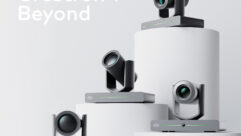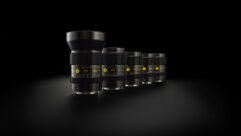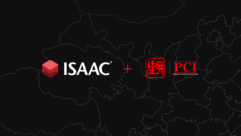Document Cameras Gain Market Share, Relevancy in Classrooms
Dec 5, 2007 12:00 PM,
By Linda Seid Frembes
With the extensive choices of classroom technology available today, it is no wonder that teachers can sometimes suffer from tech fatigue. While some may long for the era of chalk and dry erase, manufacturers have created multipurpose high-tech replacements that benefit teachers and students alike. One sought-after classroom tech tool is the document camera. “Document cameras are a great tool for teachers to present materials like books, printed material, homework, 3D objects, negatives, or transparencies,” says Lisa Yuan, product manager at QOMO (formerly Promax Technology), a developer of visual presentation solutions in Troy, Mich. “Instead of making copies or passing around an object, the entire class can see or experience it at once.”
“In the past, due to cost of the document cameras and the limited number of manufacturers, most document cameras were bought and used at the higher-education level,” Yuan says. “But the market is growing, and the pricing is now more affordable for K-12. The document cameras are a replacement for overhead projectors, with added capabilities.”
In fact, a wide range of manufacturers have developed feature sets that go beyond the basic magnification of text or enlargement of objects. The QOMO QD700, QD1200, and QD1600 document cameras have the capability of central control for all peripheral AV equipment such as PCs and DVDs or other video sources. “With our document camera, you can connect it all with the touch of a button and can switch from one to another with ease,” Yuan says.
Lumens, with offices in Fremont, Calif., and Hsinchu, Taiwan, has created the first SXGA portable document camera, called the DC160. According to the company, the DC160 can capture 66 percent more details (compared to a regular XGA document camera) with a resolution of 1280×1024 and a capture capability of 1.3 million pixels.
AVerMedia, with offices in Milpitas, Calif., and around the world, has debuted the AVerVision SPC300, a portable visual presenter with advanced functions, a new design, and some exclusive AVerMedia features such as the AVerBox, AVerPointer, and AVerVisior. These features allow users to highlight or focus on specific details onscreen with the touch of a button. In addition, splitscreen and picture-in-picture functions show live video as well as captured images simultaneously. AVerMedia’s patent-pending labels slot allows users to label ownership without writing in permanent marker or placing stickers on the unit.
“Document cameras are very low-maintenance devices,” Yuan says. “Lamps are the most important aspect of maintenance, but QOMO uses LCD lamps that last a long time. No matter what, it is best to remember to turn it off when done. The top part is a camera, not a projector, so leaving it on all the time can shorten its lifespan.”
QOMO supports its push into the document-camera market in several ways. The company does not sell direct to the user; rather, it sells through dealers with whom they partner to attend local and regional education trade shows. QOMO dealers also conduct “lunch and learn” sessions with teachers and technical directors to educate them on the company and the benefits of document camera technology in the classroom.
Once a school has purchased QOMO products, company representatives will visit the school (upon request) to train the teachers on how to integrate the technology into their lesson plans. QOMO also offers online training videos on the Promax website (soon available on the QOMO site as well) that shows the user step-by-step instructions on how to use the product.
For schools that are already using document cameras, QOMO’s interactive products including LCD panels, whiteboard and RF wireless writing tablet partner well with the technology. The 15in. or 17in. panel allows the user to write, draw or annotate over any running application and directly write into the Microsoft Office suite of products (Word, Excel, PowerPoint). QOMO interactive products work with the document camera, camcorder, or other FireWire equipment to annotate on live video via Flow! annotation software. QOMO’s interactive products are PC and Mac compatible.










